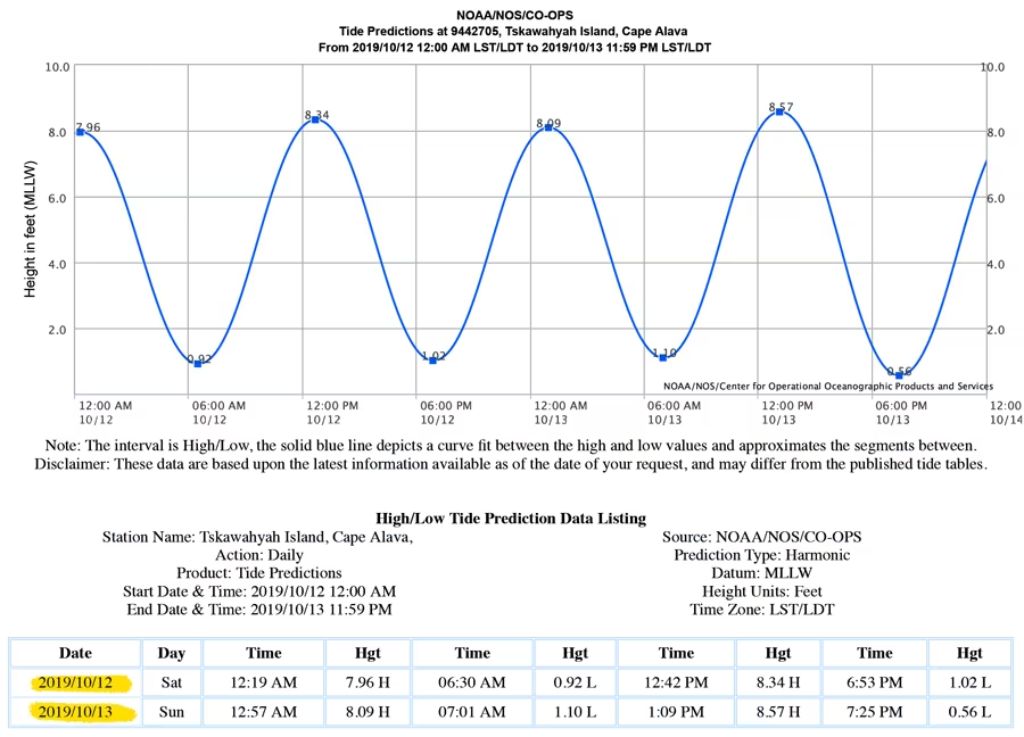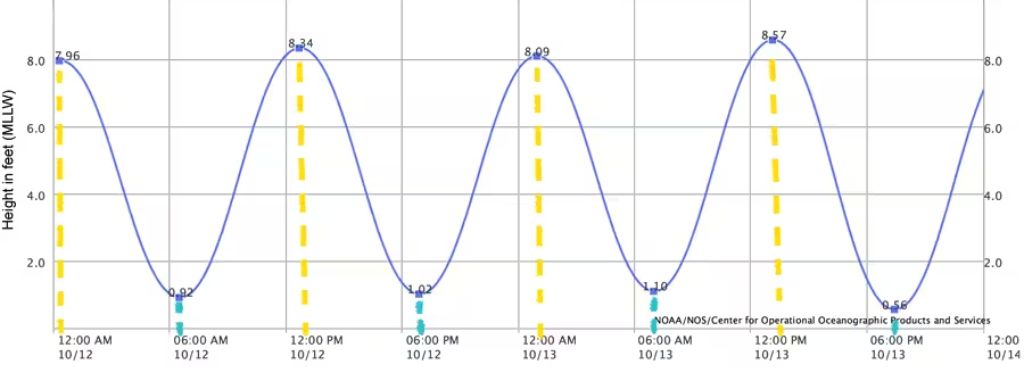Stories Worth Reeling In...
Last Updated on September 19, 2023
When it comes to enjoying outdoor activities near the water, such as boating, fishing, or simply exploring the shoreline, understanding tide charts is essential. Tide charts provide valuable information about the rise and fall of tides, allowing you to plan your adventures with precision and confidence.
In the following sections, we will delve into the basics of tides, break down the components of a tide chart, and provide you with valuable insights on how to interpret and utilize this vital information. Get ready to elevate your coastal experiences as we unravel the secrets of how to read a tide chart.
Table of Contents
The moon’s gravitational pull creates bulges in the Earth’s ocean, resulting in the rise and fall of water levels along coastlines. As the Earth rotates, different locations experience the effects of these gravitational forces, leading to the ebb and flow of tides.
Tides manifest as two primary phases: high tides and low tides. During high tide, the water level reaches its maximum height, flooding shorelines and submerging areas that are typically dry. Conversely, low tide occurs when the water level recedes, revealing more of the shoreline and exposing areas that are usually underwater. These alternating high and low tides create a rhythm that repeats approximately every 12 hours and 25 minutes.
While the moon’s gravitational pull is the primary driver of tides, other factors can influence the amplitude and timing of these tidal variations. One crucial factor is the moon’s phases. During a full moon or a new moon, when the sun, moon, and Earth are aligned, the gravitational forces are reinforced, leading to more significant tidal ranges known as spring tides. Conversely, during a quarter moon, when the gravitational forces are less aligned, neap tides occur, resulting in smaller tidal ranges.
The standard method of measurement is through the use of instruments known as tide gauges. Many ports and harbors around the world include tide gauges that measure the height of the rising and falling tides relative to a reference level termed a “benchmark” on neighboring land.
Key elements found in a typical tide chart:
When you look at a tide chart, you’ll notice several important components that provide valuable information about the tides. The chart displays the time of the day in a 24-hour format, usually divided into hourly increments. It also indicates the corresponding height of the tide, which represents the vertical distance between the water level and a reference point.
Tide charts often include symbols or abbreviations to represent different tide stages, such as high tide (H), low tide (L), and the transitional periods in between. By understanding these tide stages, you can plan your activities accordingly, knowing when the water will be at its highest or lowest points.

Reference points like mean lower low water (MLLW) and mean high water (MHW):
To provide accurate and consistent measurements, tide charts utilize reference points to establish a baseline. Two common reference points used are mean lower low water (MLLW) and mean high water (MHW). MLLW represents the average height of the lowest tide recorded over a specific period, while MHW represents the average height of the highest tide recorded over that same period. These reference points help establish a standard for measuring the tide heights and allow for comparisons between different locations.
To better understand the components of a tide chart, let’s consider an example. Imagine you’re planning a fishing trip and want to know the tide conditions at a specific location. You look at the tide chart and see that high tide is indicated as “H” at 10:00 AM with a height of 5 feet. This means that at 10:00 AM, the water level will reach its highest point, peaking at 5 feet above the reference point.
Conversely, you notice that low tide is indicated as “L” at 4:00 PM with a height of 2 feet. At 4:00 PM, the water level will be at its lowest, receding to a height of 2 feet below the reference point.

Advanced tide charts offer additional features that can enhance your understanding and planning. One such feature is the tidal range, which represents the difference in height between high tide and low tide. It allows you to anticipate stronger currents or extreme tidal fluctuations, which can be crucial for activities like fishing or surfing.
Another valuable feature you might find in advanced tide charts is the inclusion of solunar charts. Solunar charts provide information about the sun and moon’s positions relative to your location, along with their impact on fish-feeding activity. By aligning the peak feeding times with the tide information, anglers can maximize their chances of a successful fishing trip.
Tide prediction graphs are also commonly included in advanced tide charts. These graphs display tidal patterns over a specific period, allowing you to visualize the ebb and flow of the tides throughout the day or even the entire month. With tide prediction graphs, you can observe tide trends, identify recurring patterns, and make more informed decisions regarding your outdoor activities.
To make the most of these advanced tide chart features, it’s essential to understand how they can aid your planning and decision-making process. Here are a few insights to help you leverage these features effectively:
When it comes to using tide charts, implementing the right strategies can make a significant difference in planning your coastal activities. Here are some practical tips to help you make the most of tide charts:
While tide charts provide valuable information, it’s essential to consider other factors that can influence your experience along the coast. Cross-referencing tide charts with local conditions and weather forecasts can help you make informed decisions. Here’s why it’s important:
Even with careful planning, tide patterns can sometimes deviate from predictions. It’s important to be adaptable and prepared for unexpected changes. Here’s how to handle unexpected tide pattern changes:
In today’s digital age, accessing accurate tide chart data has become more convenient than ever. Here are some reliable online resources and mobile apps that provide up-to-date and accurate tide information:

Mastering the skill of reading tide charts is a valuable asset for anyone venturing into coastal environments. It allows you to make informed decisions, ensuring your safety and enhancing your overall experience. Being aware of tide variations empowers you to navigate channels and shallow areas safely, take advantage of optimal fishing conditions, and explore hidden treasures revealed by the changing tides.
By becoming proficient in reading tide charts, you open up a world of possibilities for safe and enjoyable coastal adventures. So, embrace the tides, explore the shores, and make the most of your time along the coast. Happy tide chart reading and may your future endeavors be filled with memorable experiences!